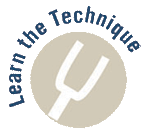

Welcome to my enameling book: The Art of Fine Enameling, Second Edition. My first book was published in 2002, over 15 years ago, and we have all grown and learned a lot since then, which this sequel will pass on to you, the reader. Who says an old dog can’t learn new tricks! The wonderful world of enamels is so diverse, practically no other medium can compare. In its easiest terms, enameling is the fusing of glass to metal under high-temperature conditions. Thus, anything that can be made from enamel-friendly metal can be enameled; anything from vases to buttons, frames to jewelry, metal mesh to solid forms, large to small, or fancy to plain. Even the tub inside your common household washing machine and street signs are most likely enameled. With technology and innovation, this just keeps increasing. This book is a look into the beauty of fine enameling, where artwork is created with colors and textures that bring joy to the heart. To start, why not simply browse the over 450 tantalizing photos of finished enamels that are included from over 165 enamelists? You will get a feel for the diversity of the medium and the charm of the finished pieces. Unlike other art forms such as painting and fabric arts, enamels won’t fade with time; they are as permanent a medium as you will find. As in the first book, the projects included are by contemporary living enamelists, not all full time professionals, but we do all teach, either at the college level or at the major craft education centers around the country. Some of the material included the first time around is included in this book, too. The organization is updated, 15 years of experience has been added, about half the projects have changed, nameless processes are now named, and two types of mini-projects to expand your learning experience are included. In addition, with each project, I have added a Technique Gallery of other artists’ working in that technique to give a view of other ways that technique can look and be used. Some of these artists represented here only use enamels in their work periodically, but these show how enamels can enhance other art forms without the artist having to be a full time enamelist. The projects included from my first book are some of the classical techniques such as Champlevé, Cloisonné and Plique-à-jour. The new projects are other traditional techniques or newer approaches to materials such as the use of Graphite Pencil or Enameling on Steel. The mixture of projects was meant to teach the basics and also provide instruction for more esoteric forms of enameling. The mini-projects are general descriptions on a technique without giving full step-by-step instruction with photos. Two types of mini-projects are included: One type is associated with most projects - the variations to a full project. T |
Remember the wise words of Bill Helwig, mentor to many of the artists in this book: “if you can repeat a mistake three times, it becomes a technique”. An example of this is the error of over firing silver on a copper base, forming a eutectic. This is now a project, Eutectic Effect, which gives some guidelines on how to control the process. Always keep in mind that although something didn’t come out the way you envisioned it, it may be just wonderful and we’ll call that: Oops Perfect! Most of my work today is making Studio Buttons, those little pieces of artwork, created for sale to Button Collectors. As most people have not heard of Button Collecting (one of the top hobbies in the country), I wanted to show some of the gorgeous antique enameled buttons, which were created in many of the classical enameling techniques. I hope you find this as fascinating as I do. We are always happy when younger people enter into the field of enameling. This is especially important as many enamelists are getting older and some have already retired. For many contemporary enamelists that have passed, I have included their work as a memorial to them. Enamelists do not always agree on how things should be done. Thus the information in this book should be viewed as merely a starting point as it reflects the author’s and other artists’ views. Although some of the science about enamels is included, in general this book is a How-To text. More of the science can be found in the first five volumes of Glass On Metal (GOM) magazine, originally published in 1982 by Thompson Enamel, and now published by the Carpenter Art Enamel Foundation. Much of the writing was by Woodrow W. Carpenter, who has had a large impact in the enameling field. Of course I still show many gorgeous enamels for eye candy. Thus the purpose of the book is not just a how-to primer, but a coffee table book and a way to learn and appreciate The Art of Fine Enameling. --- Karen L. Cohen |


